6 reasons you should upgrade to Windows 10 for free while you still can
You will be upgraded.
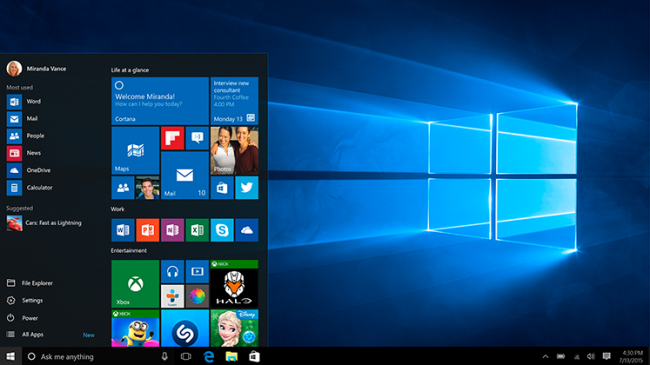
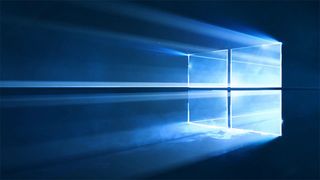
Ever since its release, Windows 10 has been a bit controversial. Even this week, Tim Sweeney had critical things to say about what Microsoft may do in future updates. And after the flubbed base hit that was Windows 8 (and let’s be honest: 8.1 wasn’t really much better), there are a lot of people who still cling to Windows 7 for dear life. When Windows 10 was released, Windows 7, 8, and 8.1 users were offered free upgrades, and the deadline for claiming that free upgrade is July 29, only two days away.
I’ve been a somewhat vocal opponent of Windows 10 for many reasons. I use Linux most of the time, after all. That said, even I have a few Windows boxes at home that I need to pull the upgrade trigger on. And there’s a few really good reasons you should seriously consider spending this Friday night backing up and upgrading, too. (You don’t have to back up, but that’s the safe way to do things.)

1. DirectX 12
For gamers, DirectX 12 is the biggest reason by far to upgrade to Windows 10. Microsoft has made it clear that DX12 is for Windows 10, and won’t be releasing it for 8.1 or older OSes.
The thing is, it’s very likely you’re not playing games that use DX12 right now. Most games that use DirectX are still running with DirectX 11. Even games that offer DirectX 12 support may run faster or with fewer bugs without DirectX 12. However, DirectX 12 is still in its infancy, and updates to the API will roll out over time.
Gaming studios will likely migrate to DirectX 12 in the coming years, if they can find features in the API that they can’t live without. The API offers lower-level access to hardware than DX11 does, which means developers have more control over the hardware and can potentially squeeze out more performance. Again, this is currently hit-and-miss depending on your hardware. When Jarred tested DX12 in Total War: Warhammer, AMD cards saw a performance boost while Nvidia cards saw a reduction.
For now, DX12 is hardly a guarantee of better performance, but without Windows 10, you can count yourself out of the option to use it in the future. Microsoft Studios is also releasing nearly all of their upcoming DX12 games via the Windows Store, which means you need Win10 if you want to play games like Forza, Gears of War Ultimate, Quantum Break, and more, likely including the next Halo. If you want to keep your options open, you’re basically forced to upgrade.
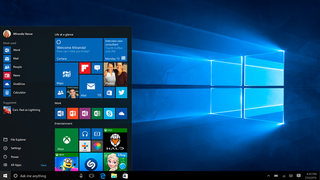
2. Return of the Start Menu
As a Linux user, one of my biggest pet peeves about Windows is that its window manager and desktop environment are hard-baked into the OS. (On Linux, I can freely switch between desktop experiences as I see fit.) What this means is that when Microsoft makes a user experience decision, we're generally stuck with it. For Windows 8, this meant the Start Screen and no Start Menu. (There are ways around this, like Start8 and Classic Shell, but the vast majority of users stick with the baked-in UX.)
The biggest gaming news, reviews and hardware deals
Keep up to date with the most important stories and the best deals, as picked by the PC Gamer team.
While this may seem like a minor inconvenience for some, the Start Screen was an abomination for man desktop users. The Start Screen may be a better interface for touchscreen devices, but the Start Menu is a much better UX metaphor for the desktop and a mouse-driven experience. Windows 10 brings back the Start menu with features borrowed from the Start Screen.
If you’re like me and you’re not all that into clicking through menus to get things done, the new start menu is a bit faster for starting programs than Windows 8 when using the search function. To search for a program in Windows 8, you had to use the keyboard shortcut Win+S. In Windows 10, you simply hit Win and start typing. It’s a small difference, but it feels much faster.
Windows 7 users may not care about this as much, but if you bought a laptop or built a desktop with Windows 8, this is a big improvement in UX.
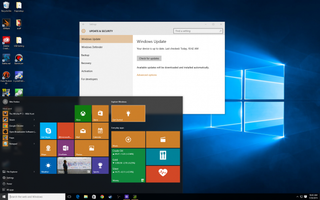
3. Support and updates
In an effort to get all Windows devices on the same page, Microsoft has said that Windows 10 will be the “last” version of Windows. It’s not entirely true, but it is in terms of branding and distribution.
Windows 7 has already passed the end of mainstream support. Extended support (read: security patches) for Windows 7 will only last until 2020. Likewise, Windows 8’s mainstream support is set to end in January 2018, with extended support until 2023.
Compare this with Windows 10, which has no real end of life per-se. If this is indeed the last version of Windows, versioning will still be accomplished through build numbers. The Windows Lifecycle Fact Sheet lists the Windows 10 mainstream support as ending in 2020 and extended support going until 2025, but that’s for the build that was released in July of 2015. There’s no real indication of what will happen after that date comes and goes, or if another major build of the OS will extend its support window.
Either way, if you want to keep getting support after 2017, you’ll need to be running Windows 10.
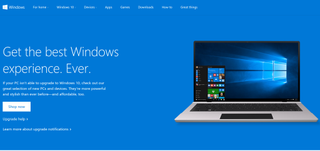
4. You will save $100 (or more)
This is the most obvious reason to upgrade, but it should be noted anyway. The most recent versions of the Home editions of Windows have run about $100 per license. Upgrading to Windows 10 now means you save that $100.
If you’re using another version of Windows (like Professional), you can save even more money since more feature-rich versions do cost more. When you upgrade to Windows 10, you’ll upgrade to the equivalent edition of Windows that you currently have. That means Windows Home users get Windows 10 Home, and Windows Professional (and Ultimate) users get Windows 10 Professional.
If you’ll be upgrading your PC later—and if you’re planning on keeping your PC past 2017, you probably will be—it makes financial sense to pull the trigger now and save yourself some cash. Why pay $100 for something you can get for free now?
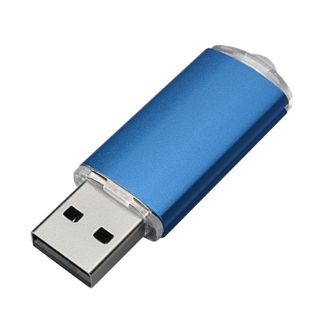
5. You don’t actually have to use Windows 10 right now if you don’t want to
The best argument I can make for upgrading to Windows 10 is that you don’t have to use the OS if you don’t want to. This sounds a little odd, but it’s true. In a manner of speaking.
The Windows 10 upgrade FAQ states that if you can reinstall Windows 10 after upgrading in the event of a system wipe or some other PC cataclysm. To do this, you either have to create installation media from within Windows 10, or create a disk image to restore to.
Here's how I read this: You can upgrade to Windows 10, create installation media on a USB stick, wipe the OS and install Windows 7 or 8 again. If you ever need to install Windows 10, you have installation media that will work because it was created from a validated installation.
Interestingly, Microsoft also appears to keep a list of upgraded PCs tied to the motherboard. This is called a ‘digital entitlement,’ and it basically means you can do a clean install of Windows 10 at a later date—you don’t even need to remember your Windows key!
The ability to upgrade, retrograde, and then reinstall from installation media is, to me, the biggest reason to upgrade. It allows you to keep the ability to install Windows 10 without diving in head-first.
If you go this route, How-To Geek has a walkthrough for you.
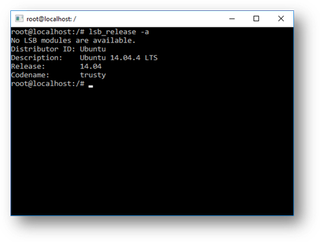
6. Windows Subsystem for Linux (WSL)
This may be a little less gamer-oriented, but if you’ve ever wanted to use Linux command-line tools on Windows, it is now possible. Ubuntu paired up with Microsoft to create the Windows Subsystem for Linux, which allows you to use the Ubuntu OS inside Windows.
Hold on, what?
It’s always weird to say this, but Linux isn’t actually an OS; it’s just a kernel. The GNU-based operating systems (like Fedora or Ubuntu) use Linux to let the OS talk to the computer’s hardware. The reason this matters is because WSL basically offers up Linux syscalls inside of the Windows environment, allowing most programs compiled for Linux to run within the Windows command prompt.
What’s really awesome is that it allows Windows users to use Ubuntu’s tools like apt to install packages. Gamers won’t need most of these tools, but if you’re also a developer, it means you can install Linux programs like Nginx, Docker, PHP, and others on Windows. Graphical programs aren’t really supported yet, but someone got Ubuntu’s Unity desktop environment to run with WSL.
The WSL is highly experimental and currently only available in Windows 10 preview builds, but it’s a cool feature nonetheless.
It's not going to be all peaches and cream
There are really good reasons to go ahead and upgrade to Windows 10 while you can. If you're on Windows 7, especially, you'll see faster boot times and lower RAM usage upgrading to Windows 10. And if you're ever going to upgrade, it’s hard to beat the incredible price of free. But we understand why you might not want to shred your Windows 7 or 8 installation media just yet.
First off, there’s the issue of forced updates. Windows 10 likes to update itself with or without your permission (and yes, quite a few people have inadvertently been upgraded to Windows 10 against their will. That sucks). While this is a good thing in some respects (namely in applying security patches regularly), many people see forced updates as taking control from the user. There’s some logic to this: If you paid for your PC, it should only be doing the things you want it to, not what some company dictates it should do.
For some users, privacy can be a concern as well. In Microsoft’s privacy statement, there are a few things that raise eyebrows.
For one, users of Microsoft’s BitLocker drive encryption feature should know that Microsoft backs up BitLocker recovery keys to Microsoft’s OneDrive by default. This is a handy feature in case you lose your backup, but having crypto keys stored on a cloud server outside a user’s control is a no-go for some.
Other users have raised concerns about Windows 10 “phoning home” with personal data. This is largely limited to opt-in services like Cortana and input recognition support. These things can be disabled, but they’re enabled by default during installation, and will be enabled if the user selects Express Installation.
There’s also the issue of Vulkan. The new low-level API is positioning itself to be a rival to DX12, and has proven to kick ass in our testing with Doom. Like OpenGL before it, Vulkan is cross-platform and will work on Windows 7, 8, 10 and Linux. If Vulkan proves to be a hit, the argument to stay with Windows due to DirectX will be severely weakened. However, this is a gamble, and the list of games that use Vulkan is currently limited to three: The Talos Principle, Dota 2, and Doom.
When it really comes down to it, upgrading to Windows 10 may be a forced decision. Sure, you can stick with an older Windows for now, but chances are you’ll be compelled to upgrade at some point, whether that’s lack of driver support, software requirements, or the cessation of security updates.
If using Windows 10 as your full-time OS just won’t work for you, you can always try dual-booting. While rebooting to change over is a bit of a pain (okay, it’s a huge PITA), some people prefer running a Linux distro for web browsing and work, while saving the gaming for Windows.
At the end of the day, if you’re a gamer and you really despise the idea of running Windows 10, there’s no easy way out.
Most Popular

